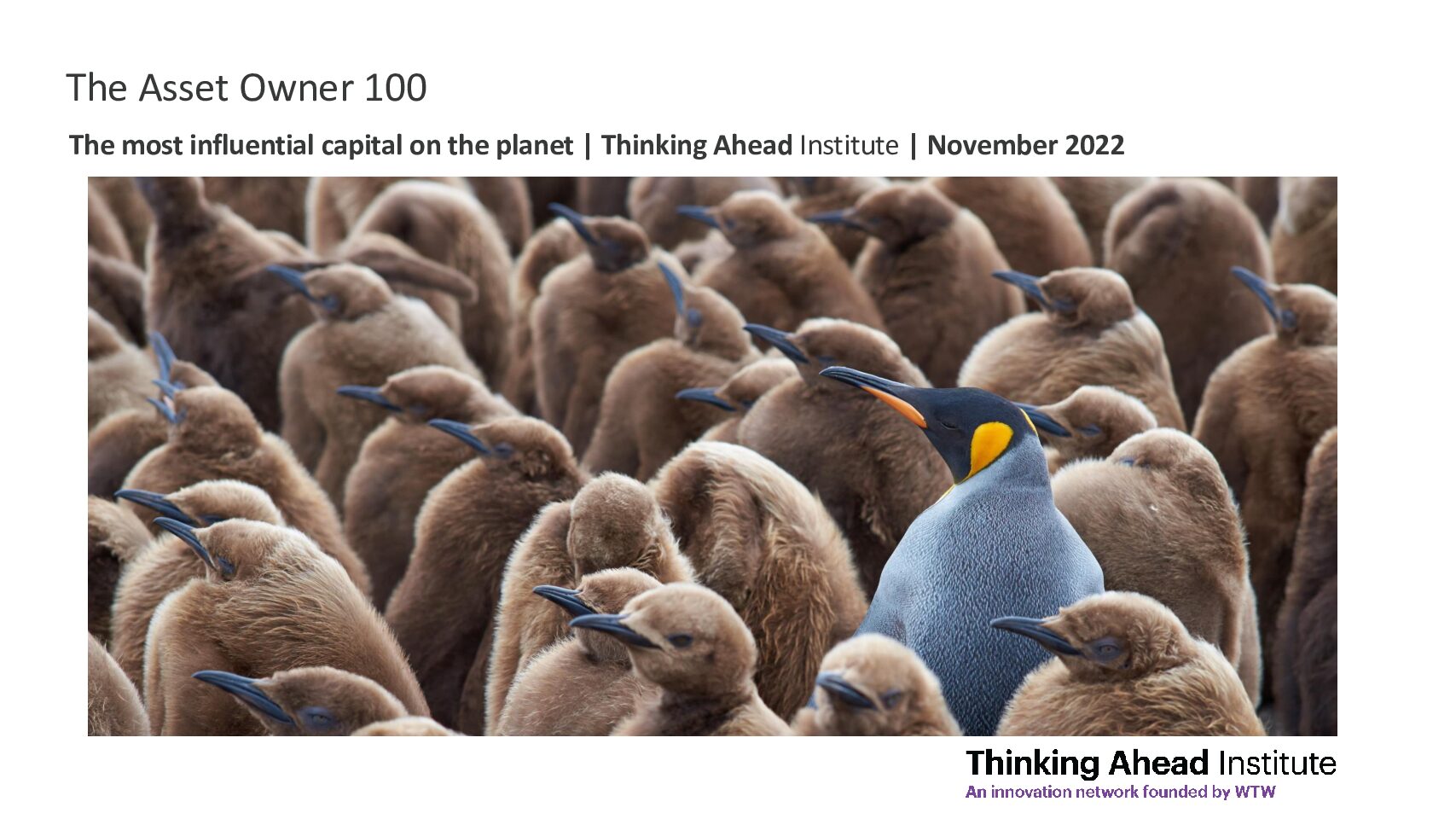The Asset Owner 100 is a Thinking Ahead Institute study which gathers data on the total assets of the top 100 asset owners around the world. Though not included in the ranking, the study also presents the total assets for the top 10 insurers and the top 10 foundations and endowments.
The research, in its fifth year, reveals total assets among the largest organisations have reached US$ 25.7 trillion at the end of 2021, growing 9% from the previous year. Pension funds remain the single biggest group of asset owners in the global study, controlling 56% of total assets although this has fallen from 58% the previous year. By contrast, sovereign wealth funds have seen their share rise comfortably above one-third, to 37%, up from 35% the previous year. The proportion of pension funds’ AUM has slowly decreased while SWF’s AUM gradually increased during the five years period.
As we reached the 5-year anniversary of the AO100 reports, we looked at the evolution of the data over this period.

The report also zooms in on long-horizon investing. Uncertainty has been one of the dominant themes in the investment industry in 2022 from heightened geopolitical risk and increased volatility, requiring investors to work within a more disciplined framework. With the macro being complex and uncertain, long-horizon investing principles provide a crucial set of guardrails.
There has been a continued focus on sustainability. Large asset owners have become more prominent in integrating ESG in pursuit of improved long-term sustainable returns, with some asset owners stepping up and moving beyond the impact of ESG risks on the portfolio to consider the impact of the portfolio and the assets on the world.
The report also covers other key themes for asset owners to address, which include:
- Alignment of beliefs and vision within an organisation as well as with external stakeholders could be improved
- Most asset owners are weighed down by governance burdens and fiduciary concerns that reduce their sustainability ambitions
- There is a potential for a global ’polycrisis’ where systemic risks combine and synchronise with consequences for risk amplification and acceleration
- Current hybrid working arrangements appear to have resulted in weakened culture and declined social capital
- Concerns around data and cyber security are on the rise
- The aggregate shortages of and costs of global talent are sky-rocketing while the costs of it showing up anywhere in the world have just sky-plummeted
- The most recent liquidity crisis associated with the liability-driven investment funds in the U.K. DB market raised questions about the future of defined benefit schemes

Related pages
Asset owner 100 2022 press release
Asset owner 100 2021
Asset owner 100 2021 press release
Global Pension Assets Study 2022
Global Pension Assets Study 2022 press release
The world’s largest pension funds 2022
The world’s largest pension funds 2022 press release
The world’s largest asset managers 2022
The world’s largest asset managers 2022 press release

